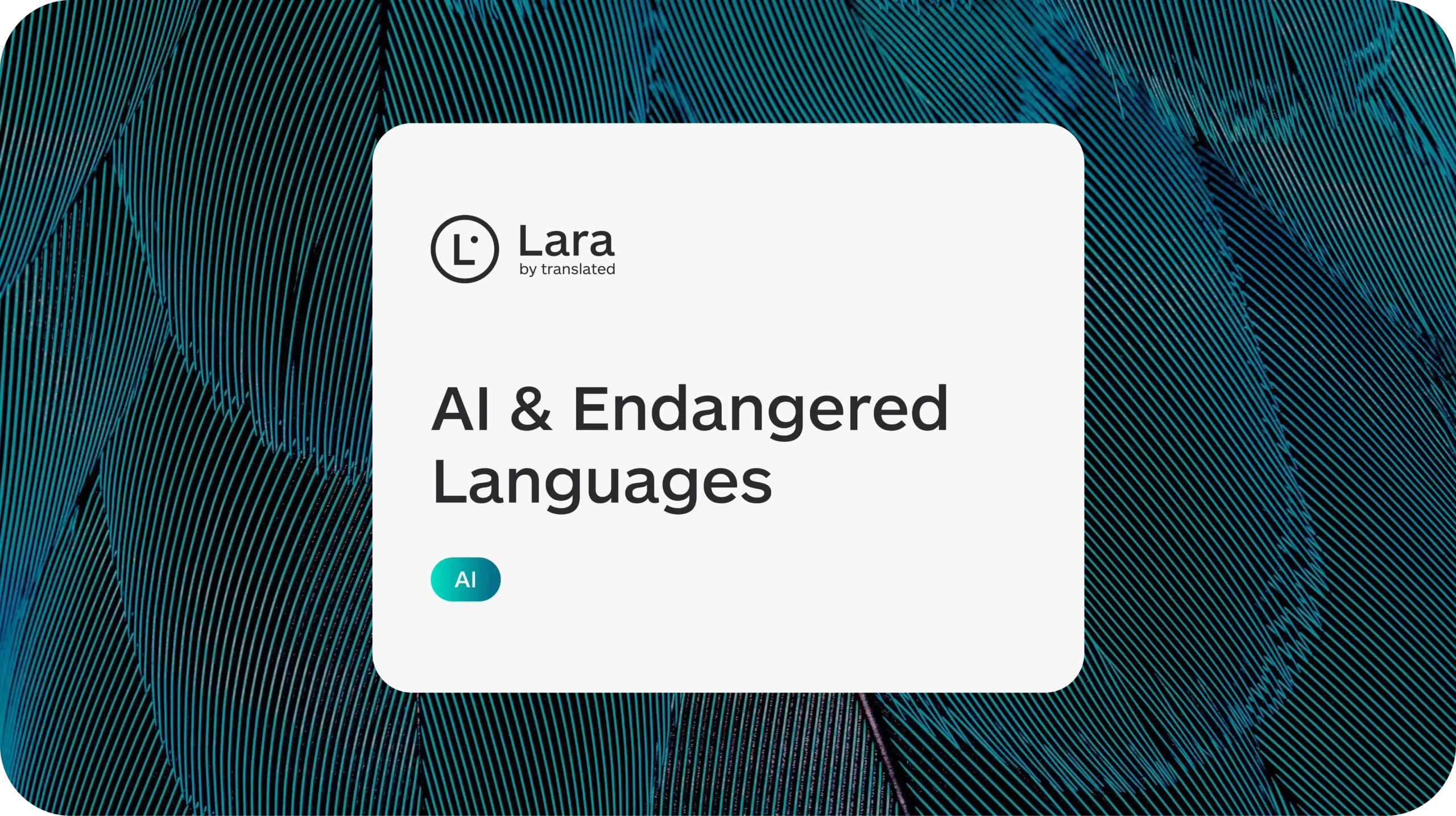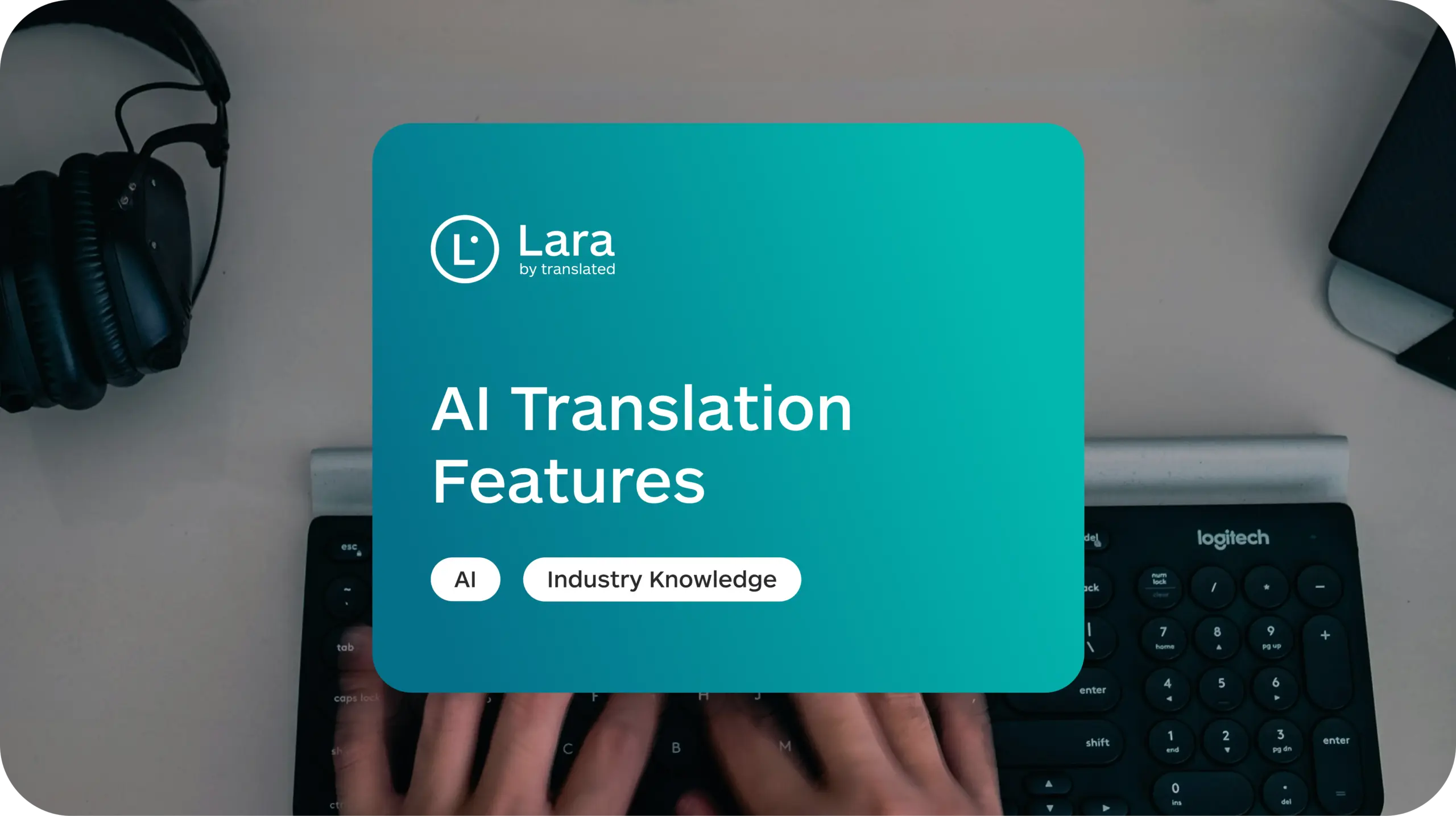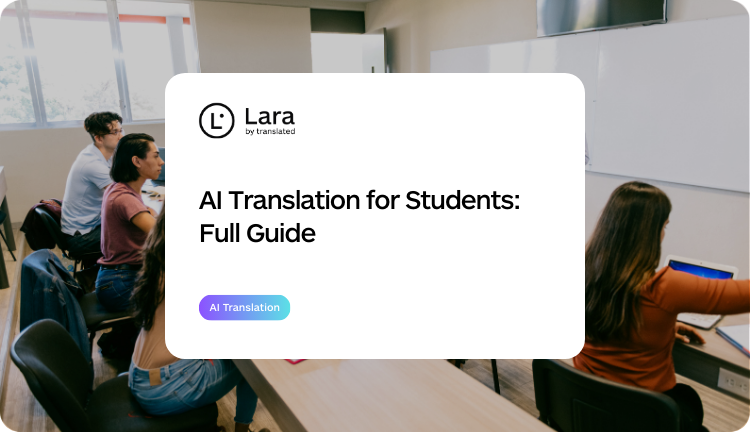Every time an elder dies without passing on their mother tongue, an entire world disappears with them—stories untold, wisdom unrecorded, songs never sung again. Language isn’t just a tool for communication; it’s a vessel for culture, memory, and identity. And right now, these vessels are sinking at an unprecedented rate.
This article explores how Artificial Intelligence (AI) is emerging as a powerful, though complex, ally in the fight for language preservation. From documentation and education to localization and storytelling, AI is opening new possibilities—while raising important ethical, technical, and social questions. Through global examples, key challenges, and community-led innovations, we examine how technology can support—not replace—the human effort to keep linguistic heritage alive.
Executive summary
- The problem: Nearly half of the world’s 7,000 languages are at risk of extinction, with one vanishing every two weeks. Endangered languages often lack digital presence, educational infrastructure, and intergenerational transmission, making traditional preservation methods too slow and resource-intensive.
- The promise of AI: Artificial Intelligence offers transformative tools—from automated transcription to virtual classrooms and generative storytelling—accelerating documentation, expanding learning opportunities, and bringing minority languages into the digital world.
- Key Takeaways:
- AI works best alongside community-led efforts, not in isolation.
- Ethical deployment requires transparency, data sovereignty, and trust-building with Indigenous communities.
- Infrastructure gaps must be addressed through low-bandwidth, mobile-first, and offline-ready solutions.
- Success stories like Te Hiku Media show how AI can empower, not exploit, endangered language communities.
- Sustainable preservation depends on long-term investment, localization, and inclusive access to modern technologies.
AI is not a replacement for human cultural knowledge—but when applied thoughtfully, it becomes a powerful amplifier of community-led language revitalization.
The need
Imagine a world where every two weeks, a language vanishes forever. This is not science fiction—it’s our reality. According to UNESCO, at least 40% of the world’s 7,000 languages are currently endangered, and without intervention, nearly half of all languages could disappear by the end of this century.
When a language dies, we lose far more than words. We lose unique cultural heritage, traditional knowledge, and collective identity. Each language represents an irreplaceable perspective on the human experience—a distinct lens through which communities have made sense of their world for generations.
Language preservation matters because languages contain specialized knowledge about local ecosystems, medicinal plants, weather patterns, and sustainable practices that have evolved over millennia. They carry oral histories, spiritual concepts, and cultural values that often have no direct translation in dominant languages. A language extinction means losing these unique ways of seeing and being in the world.
Traditional language preservation methods—field linguistics, dictionaries, and audio recordings—remain vital but face significant challenges. Many endangered languages have only a handful of elderly speakers left, limited written records, and little presence in education or modern media. The labor-intensive nature of documentation means linguists often cannot work quickly enough to capture languages before their last speakers pass away.
This urgency has prompted global action. The United Nations declared 2022-2032 the International Decade of Indigenous Languages, calling for decisive efforts to document and revitalize languages at risk. But can we win this race against time?
Sociopolitical causes of language endangerment
Understanding why languages become endangered is crucial for developing effective preservation strategies. While natural disasters and population declines can threaten languages, the most pervasive causes are sociopolitical in nature:
Colonialism and its legacies
The impact of colonialism on global linguistic diversity cannot be overstated. Colonial powers systematically suppressed indigenous languages through policies designed to eliminate cultural difference and establish political control:
- Forced assimilation: Colonial administrations established schools where indigenous children were forbidden to speak their native languages, often under threat of physical punishment. The infamous boarding schools in North America, Australia, and elsewhere deliberately separated children from their communities to break intergenerational language transmission.
- Administrative replacement: Colonial languages became the official languages of government, law, and commerce, relegating indigenous languages to informal, private settings. This created powerful economic and social incentives to abandon native tongues in favor of the colonizer’s language.
- Cultural devaluation: Indigenous languages were portrayed as “primitive,” “backwards,” or insufficient for modern life. This cultural messaging created internalized stigma that discouraged communities from maintaining their languages.
Even post-independence, many formerly colonized nations maintained these linguistic hierarchies, often elevating a single indigenous language to national status while continuing to marginalize dozens or hundreds of others.
Economic pressures and globalization
In today’s interconnected world, economic factors exert tremendous pressure on linguistic choices:
- Labor migration: When speakers leave traditional communities to find work in urban centers or abroad, language use patterns shift dramatically. Children raised in these new environments often have limited exposure to heritage languages.
- Market value: Languages perceived to offer economic advantage—particularly global languages like English, Mandarin, Spanish, and Arabic—attract learners and resources, while languages with limited “marketplace utility” struggle to maintain relevance.
- Digital divide: Languages without significant digital presence become increasingly marginalized as communication, entertainment, and information move online. Many endangered languages lack standardized writing systems, keyboard layouts, or Unicode support.
- Development policies: International development initiatives often prioritize major languages for education and services, inadvertently accelerating the decline of local languages.
Nation-state politics and language policies
Modern nation-states have complex relationships with linguistic diversity within their borders:
- Standardization Policies: Many countries promote a single “national language” as a symbol of unity and shared identity. This standardization often comes at the expense of regional languages and dialects.
- Security concerns: Some governments view linguistic minorities as potential security threats or separatist risks, leading to repression of minority languages under the guise of national cohesion.
- Resource allocation: Even when minority language rights exist on paper, inadequate funding for mother-tongue education, media, and services undermines these rights in practice.
- Demographic policies: Population resettlement programs that move majority-language speakers into minority regions can rapidly shift language dynamics and create new pressures on smaller languages.
Media and cultural homogenization
The global dominance of a handful of languages in entertainment, news, and social media creates overwhelming exposure to majority languages:
- Entertainment industry: The concentration of film, music, and television production in a few global languages means speakers of minority languages have limited access to entertainment in their mother tongue.
- Educational materials: Textbooks, academic journals, and online learning resources are predominantly available in major languages, creating obstacles for education in minority languages.
- Social media platforms: Major platforms often launch with support for only a dozen or so languages, with smaller languages added slowly if at all, limiting digital communication options.
Successful resistance and revitalization
Despite these powerful forces, some communities have successfully resisted language loss through political action and cultural revitalization:
- Language rights movements: Indigenous activism has secured legal protections and constitutional recognition for endangered languages in countries like Bolivia, New Zealand, and Finland.
- Community schools: Immersion programs like Hawaiian language nests (Pūnana Leo), Māori immersion schools (Kura Kaupapa Māori), and Navajo immersion programs have produced new generations of fluent speakers.
- Political autonomy: Regional autonomy arrangements in places like Catalonia, the Basque Country, and Nunavut have created spaces where minority languages can flourish as languages of government and public life.
- Media reclamation: Community radio stations, indigenous film festivals, and native-language newspapers provide crucial domains for language use beyond the home.
These examples demonstrate that language decline is not inevitable—with sufficient political will, community engagement, and resource allocation, endangered languages can regain vitality. Technology and AI must engage with these sociopolitical realities to be truly effective as preservation tools.
Global landscape of language endangerment
Language endangerment is a global phenomenon, though its intensity varies by region. Understanding the geographic distribution helps illustrate both the scale of the crisis and the diversity of contexts in which preservation efforts must operate:
The Americas face severe challenges, with over 500 indigenous languages at risk. In North America, only 175 of the estimated 300 pre-colonial languages remain, most critically endangered. Languages like Comanche and Osage have fewer than 100 speakers. In Latin America, Brazil alone has seen 15% of its indigenous languages disappear in the last century. Even relatively “successful” languages like Quechua and Nahuatl face declining speaker populations amid economic and social pressures.
Africa, despite its reputation for linguistic diversity, is experiencing rapid language loss. The continent holds about 2,000 languages (30% of the global total), but urbanization and education policies favoring colonial languages (English, French, Portuguese) have marginalized indigenous tongues. Languages like Yaaku in Kenya and Lere in Nigeria have fewer than 10 elderly speakers remaining.
Asia presents a complex picture. India’s constitutional recognition of 22 languages offers some protection, yet hundreds of smaller languages remain vulnerable. China officially recognizes 56 ethnic groups, but dozens of minority languages like Manchu and Hezhen face extinction. In Northeast Asia, the Ainu language of Japan has fewer than 10 native speakers despite revitalization efforts.
The Pacific region, particularly Australia and Papua New Guinea, represents both the greatest linguistic diversity per capita and some of the most severe endangerment. Australia has lost about 100 indigenous languages since colonization, with only 13 of the remaining 145 considered “strong.” Papua New Guinea, with over 800 languages in a population of just 9 million, is seeing rapid language shift as younger generations adopt Tok Pisin and English.
Europe, despite its economic resources, has not escaped the pattern. Regional languages like Cornish, Livonian, and Dalmatian have either disappeared or survive with tiny speaker populations. Even languages with official status, like Irish and Basque, struggle to maintain everyday usage despite government support.
The global nature of this crisis demonstrates that language endangerment transcends economic development levels, political systems, and cultural contexts. It is a truly universal challenge requiring diverse, contextually appropriate solutions.
The potential of AI in covering the need
Technology has emerged as a powerful ally in language preservation efforts, offering solutions that were unimaginable just a decade ago. Modern systems can process text, audio, and video at unprecedented speed and scale, effectively multiplying human capacity to document and teach languages.
Key ways technology is making an impact include:
Building digital repositories: Advanced tools help create comprehensive, searchable digital archives by analyzing and transcribing speech or text. Automated systems can transcribe oral stories told by the last speakers of a language, preserving cultural narratives even when human transcribers are unavailable.
Enhancing accessibility: Digital applications bring endangered languages to wider audiences. Language apps can function as virtual tutors, providing instant feedback on pronunciation and grammar. Translation tools enable speakers to read content in their mother tongue that was originally written in a major language, expanding available materials.
Preserving authenticity: When guided by community expertise, technological systems can maintain the nuances and unique expressions of a language. Advanced translation approaches now aim to reflect a language’s distinctive metaphors, idioms, and honorifics, ensuring that the essence of the language is preserved.
Creating communication bridges: Technology enables virtual connections between dispersed communities. Modern tools help educators create teaching materials with minimal resources. Digital platforms can facilitate virtual classrooms connecting fluent speakers with learners worldwide, overcoming geographical and generational gaps.
Generating cultural content: Large language models (LLMs) now have the capacity to generate stories, poems, and dialogues in endangered languages when trained on appropriate cultural data. These generative capabilities can help educators create diverse learning materials that reflect traditional storytelling patterns and cultural contexts. For instance, an LLM could help produce children’s stories that follow traditional narrative structures or generate conversational examples for language learners to practice with. This content generation capability is particularly valuable for languages with limited existing materials, providing learners with a broader range of texts to engage with.
Expanding localization: Powerful localization tools make it economically feasible to translate content into more languages than before. This brings endangered languages into digital and commercial spheres, ensuring they can be used in modern contexts like smartphones, websites, and social media—critical for attracting younger speakers.
Ethical considerations: A balanced view
The application of AI in language preservation raises profound ethical questions that deserve careful consideration. A balanced assessment reveals both promising opportunities and genuine concerns:
Potential benefits
Empowerment and autonomy: When developed collaboratively, AI tools can empower communities to document and revitalize their languages on their own terms. Unlike earlier linguistic fieldwork that sometimes positioned indigenous people as passive subjects of study, modern technology can place control directly in community hands.
Accessibility and scale: AI makes language preservation more accessible to communities with limited resources. Automated transcription, translation, and language learning tools can extend the reach of small teams of language activists, allowing them to accomplish more with less funding and fewer human resources.
Preservation of dying knowledge: For languages with only a handful of elderly speakers, AI offers a way to capture and preserve linguistic knowledge that might otherwise be lost forever. These digital recordings become invaluable resources for future generations attempting to reconnect with their heritage.
Innovation in pedagogy: AI-enabled language learning tools can adapt to individual learning styles and provide personalized feedback, potentially making language acquisition more engaging and effective for new learners.
Legitimate concerns
Data sovereignty and ownership: Who owns the AI systems trained on indigenous languages, and who controls the resulting data? Without careful planning, communities might find their linguistic heritage appropriated by external entities with little benefit flowing back to the original speakers.
Inaccuracy and misrepresentation: AI systems can perpetuate or amplify errors, particularly when trained on limited data. These inaccuracies risk misrepresenting cultural concepts, religious terms, or historical narratives in ways that distort rather than preserve heritage.
Dependency and technological colonialism: Over-reliance on external technology creates new forms of dependency. If preservation efforts rely heavily on proprietary systems owned by tech companies or universities, communities may lose autonomy over their own language revitalization.
Privacy and sacred knowledge: Not all language content is meant for wide distribution. Sacred songs, ceremonial language, or culturally sensitive narratives might be inappropriately captured and disseminated through AI systems that don’t recognize these boundaries.
Standardization vs. variation: AI systems tend to standardize language, potentially flattening dialectal variation, generational differences, or contextual speech patterns that are essential aspects of living languages.
Emerging best practices
Several principles can help navigate these ethical complexities:
Community-led development: The most successful ethical frameworks center community leadership at every stage—from deciding which aspects of language to digitize to controlling access to the resulting resources.
CARE principles: The Collective Benefit, Authority to Control, Responsibility, and Ethics (CARE) principles for indigenous data governance provide an ethical framework specifically designed for cultural and linguistic data.
Transparency in AI systems: Communities should have full understanding of how AI tools work, what data they collect, and how that information might be used in the future.
Trust-building mechanisms: AI systems can incorporate specific features designed to build trust with communities that have historically faced exploitation. These might include provenance tracking that shows how language data is being used, clear benefit-sharing agreements embedded in data licenses, and technical safeguards that prevent unauthorized use of sensitive cultural knowledge. Digital sovereignty protocols—like those developed by Te Hiku Media and other indigenous technology initiatives—provide models for how AI can respect community autonomy while still leveraging technological innovation.
Hybrid approaches: Combining AI capabilities with human expertise ensures technology serves as a complement rather than a replacement for community knowledge holders.
Sustainable investment: Ethical AI deployment requires long-term investment in local technical capacity, ensuring communities can maintain and adapt systems as technology evolves.
When implemented thoughtfully, AI can be a powerful force for cultural sovereignty rather than a threat to it. The key lies in ensuring that technology serves community-defined goals rather than imposing external priorities on language preservation efforts.
Challenges
Despite its promise, technology faces significant hurdles in language preservation work:
Data scarcity: Most endangered languages have minimal digital text or recordings available. Modern systems typically require substantial data to perform well, creating a catch-22 for languages with few remaining resources.
Quality concerns: Translation quality varies dramatically depending on available training data. While translation for well-resourced languages can be highly accurate, it may be significantly less reliable for languages with limited resources.
Cultural nuance: Automated systems may miss crucial cultural context and nuance. A mistranslation of a traditional story or sacred concept could misrepresent the culture or mislead learners—a serious risk when stakes are high.
Technical obstacles: Many endangered languages have features that mainstream systems aren’t designed to handle: complex morphology, non-Latin scripts, oral-only traditions, or significant dialectal variation.
Infrastructure inequity: Many communities that speak endangered languages lack reliable internet access, sufficient computing power, or technical expertise to effectively implement AI solutions. The digital divide means the regions most in need of language preservation tools often have the least technological infrastructure to support them. Effective solutions must include offline-friendly applications, low-bandwidth options, and systems that can run on modest hardware. Mobile-first approaches are particularly promising, as smartphone penetration often exceeds traditional computer access in remote areas.
Trust and historical trauma: Many Indigenous and minority communities have experienced exploitation of their cultural knowledge, creating understandable reluctance to share language data with external entities. Historical abuses by researchers, governments, and corporations have left legacies of distrust that technological solutions must acknowledge and address. AI initiatives need transparent data policies, clear benefit-sharing mechanisms, and collaborative governance structures that center community control. Building trust requires time, consistency, and genuine partnerships rather than extractive research models.
Over-reliance risk: There’s danger in assuming technology can replace human expertise and cultural knowledge. The most effective preservation efforts recognize that technology should complement, not replace, community leadership.
Success stories
Despite these challenges, several initiatives demonstrate technology’s potential in language revitalization:
Amazonian language revival: Researchers partnered with Indigenous communities in Brazil to build a digital writing assistant for Nheengatu, a severely endangered Amazonian language. Despite being trained on only a few thousand example sentences, this system can translate between Nheengatu and Portuguese or English, suggest words, and check spelling—essentially serving as a digital language coach for semi-speakers.
Manx resurgence: Once declared extinct by UNESCO, Manx—a Celtic language of the Isle of Man—has experienced remarkable revitalization. Today it’s taught to children and included in major translation platforms, showing how technology can help bring a language back from the brink.
Indigenous translation innovations: Native researchers and community members are developing innovative approaches for critically endangered languages. By combining traditional linguistic knowledge with modern technology, these systems use established grammatical rules to guide translations, breaking complex sentences into simpler ones when needed to convey at least basic meaning.
Low-Resource language initiatives: Major research projects have built systems capable of translating between hundreds of languages, many considered low-resource. These efforts have achieved impressive quality improvements, with translation accuracy for some African and South Asian languages improving dramatically compared to previous technologies.
Te Hiku Media: This Māori-led organization in New Zealand represents one of the most successful models of Indigenous-controlled language technology. Their “Kōrero Māori” initiative created the first speech recognition system for the Māori language, using a community-centered approach where all data and resulting technologies remain under Indigenous control. Te Hiku Media developed the “Kaitiakitanga License” (Guardian License) that ensures data sovereignty while allowing for technological development. Their Papa Reo platform now includes speech recognition, text-to-speech capabilities, and language tools that serve both preservation and revitalization goals. Critically, this success story demonstrates that communities can lead rather than merely participate in technological development when given appropriate resources and control.
These examples share a common thread: successful projects combine cutting-edge technology with community involvement. The most effective initiatives engage native speakers in data collection, translation validation, and cultural guidance, ensuring technology amplifies rather than replaces human wisdom.
The role of technology in comprehensive language preservation
Language preservation requires a multi-faceted approach, with technology serving as just one component of a broader strategy:
Documentation: The first step in preserving endangered languages is comprehensive documentation. Modern tools can accelerate this process through automated transcription of spoken language, optical character recognition for historical texts, and structured databases that organize linguistic information. This creates a foundation for dictionaries, grammar references, and educational materials.
Education: Technology creates new pathways for language learning. Interactive apps, digital textbooks, and online courses make it possible to learn endangered languages even without local teachers. Virtual reality environments can simulate immersive cultural contexts where language would naturally be used.
Community engagement: Digital platforms connect scattered language communities, allowing speakers to practice with each other regardless of physical location. Social media groups dedicated to endangered languages create spaces where speakers can share content, answer questions, and build community around their shared linguistic heritage.
Media production: Digital tools empower communities to create their own media in endangered languages—videos, podcasts, games, and websites that make the language relevant to younger generations. Automated dubbing and subtitling can help translate popular media into minority languages, expanding entertainment options.
Policy support: Data-driven insights help advocacy organizations make the case for language preservation policies. By demonstrating patterns of language use and decline, technology can inform targeted interventions at the governmental level.
Sustainable funding models: The economics of language preservation require careful consideration. Traditional investment models often fail endangered language technologies because they lack the massive user bases that commercial applications target. Both public and private funding frameworks need adaptation to support linguistic diversity initiatives. Public funding through grants, national endowments, and international organizations provides essential baseline support, but sustainable models might also include community-owned intellectual property, fair licensing arrangements, or social impact investment frameworks that recognize the cultural, educational, and social value of language preservation. Importantly, investment in this field creates broader benefits through increased digital inclusion, educational outcomes, and preservation of culturally significant knowledge.
The most powerful technology approaches take a “by the community, for the community” approach. When speakers of endangered languages are trained to use preservation tools themselves, the result is more authentic, culturally appropriate, and sustainable. This empowerment model ensures technologies serve the community’s vision for their language’s future, rather than imposing external priorities.
Conclusion
The fight to preserve endangered languages has gained powerful allies in modern technology. Digital tools aren’t replacing the human passion and cultural knowledge needed to keep languages alive, but they are supercharging these efforts by accelerating documentation, creating new learning pathways, and integrating minority languages into the digital sphere.
The global nature of language endangerment requires global cooperation, yet solutions must be locally tailored. From the Arctic Circle to the Amazon Basin, from Australian deserts to Siberian forests, communities are fighting to maintain their linguistic heritage. Technology can serve as a bridge between these diverse contexts, allowing successful approaches to be adapted and shared.
The most successful preservation initiatives balance technological innovation with community wisdom and address the sociopolitical realities that drove language endangerment in the first place. Political recognition, economic viability, educational reform, and cultural pride must accompany technological solutions for true language revitalization to occur.
When this balance is struck, digital tools become multipliers of human ingenuity and dedication, empowering communities to preserve their unique voices for generations to come. Each language saved is a culture saved—a distinct perspective on the human experience that enriches our collective heritage and reminds us of the remarkable diversity of human thought and expression.
As we look ahead, we can be cautiously optimistic. With thoughtful application of technology, grassroots activism, and policy reform, the tide of language loss can be stemmed. The ultimate goal isn’t preservation in a museum-like sense, but vibrant, living languages that continue to evolve and adapt while maintaining their essential character and cultural roots. This vision is ambitious but achievable—and the stakes for human cultural diversity are too high for us to accept anything less.





